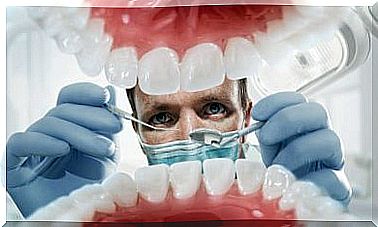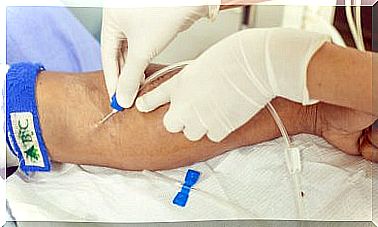Eardrum Perforation: Causes And Treatments
Tympanic perforation is a rupture or hole in the eardrum, the membrane that separates the ear canal and the middle ear. This membrane is called the eardrum. The middle hatred is connected to the nose by the Eustachian tube, whose function is to balance the pressures in the middle ear.
Tympanic perforation is usually accompanied by a decrease in hearing, which can be very frightening to the patient, and eventual suppuration. These types of injuries can be very painful.
However, despite the hearing loss that can occur at the beginning of the injury, most people who suffer a perforated eardrum end up recovering this sense perfectly.
This is because the tympanic membrane tends to heal on its own. Even patients who have suffered many perforations often have an intact eardrum. However, when the membrane regenerates, it does so with only two of the three layers it is composed of, so the area has a finer appearance.
On the other hand, a patient who has a perforated eardrum is more susceptible to infections in that area. Especially when water enters through the external auditory canal. That is why the use of plugs is recommended during the shower and the extraction of wax with water is contraindicated.
Why can a tympanic perforation be caused?
Typically, the main causes of eardrum perforation are due to trauma or infection. Using cotton swabs or other objects inside the ear canal to clean your ears may be responsible for the breakage.
There are also other causes, which we mention below:
- Acoustic trauma : exposure to loud noises such as those associated with explosions can trigger eardrum injuries. Fortunately, these are not noises that we often hear in our country.
- Barotrauma or sudden pressure change: normally the air pressure in the middle ear and outside are in balance. However, there can be situations, such as traveling by plane, that can cause sudden pressure changes that lead to a perforated eardrum.
- Head injury : A blow directly to the ear or a serious head injury, as occurs in some traffic accidents, can lead to ruptures in both the skull and the eardrum.
- Cotton objects : As mentioned above, certain items, such as cotton buds or hairpins, can stick into the eardrum, injuring it.
- Ear infections : when the patient has an infection in the middle or inner ear, pus or another type of fluid can accumulate behind the eardrum, causing the latter to perforate after a while.
- Blow to the pinna and / or ear canal : for example, if the patient has suffered a fight and was hit in that area, it can also be a cause of the tympanic injury.
Symptoms
The clearest symptom of a perforated eardrum is earache. This pain can be mild to severe. It can also increase over a period of time or it can decrease suddenly, which is the most common.
Another symptom that may appear is discharge from the ear. The discharge may be a clear, pus, or bloody fluid. In addition, it is possible that the patient, as we have already pointed out, suffers a hearing loss.
On the other hand, it is also possible to feel ringing or ringing in the ears. This symptom is known clinically as tinnitus. Other characteristic symptoms of tympanic perforation are:
- Dizziness, unsteadiness or vertigo
- Nausea and vomiting
- Weakness in the muscles of the face, although it is usually a rare symptom.
Treatment
As we said at the beginning of the article, tympanic perforations usually heal on their own. It takes about two weeks for the injury to heal without the need for any treatment.
Despite self-healing, over-the- counter pain relievers, such as NSAIDs, are often given to relieve pain.

In the case in which the eardrum perforation is accompanied by infection or in order to prevent it, the doctor may prescribe some type of antibiotic, both in the form of tablets or in ear drops.
Therefore, medical treatment is focused on controlling the suppuration. Surgical treatment can also be carried out when patients have many symptoms or those who are swimmers. This procedure is called tympanoplasty. It consists of implanting a small fragment of the body’s own tissue to close the perforation of the eardrum.









